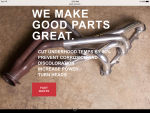In the interest of battery preservation (Odessey Xtreme) I ordered a plug-in heater for winter and heat sheild wrap for summer - slo-mo rock crawling in Moab is brutal for bats and have actually melted one :surprise But that was before I installed hood vents...however, still looking to do what I can to maintain bat health in both extreme heat and cold :angel So true:”Batteries don’t die - they’re murdered”.
My question is simple - this kit came with no instructions and I saw none online. I want to reuse it for future summers. The metallic layer has a sticky back which adheres to a thick felt blanket but leaves a 1” margin, probably to stick to itself and keep it wrapped. Included with the kit is a piece of metalc sticky back tape exactly the dimensions of the overlap on the metallic layer. To me that may be significant somehow. If I go ahead and stick the two layers together, wrap the bat, and use the extended end to stick it together, I will have to cut it off (and hence the only sticky part) this fall. The extra tape - is that for next summer? What about the following summers...go find my own tape and continue letting a bump of tape pile up over the years? If so I can live with that but just want to make sure I’m not missing something before I pull off the backing :rofl:
My question is simple - this kit came with no instructions and I saw none online. I want to reuse it for future summers. The metallic layer has a sticky back which adheres to a thick felt blanket but leaves a 1” margin, probably to stick to itself and keep it wrapped. Included with the kit is a piece of metalc sticky back tape exactly the dimensions of the overlap on the metallic layer. To me that may be significant somehow. If I go ahead and stick the two layers together, wrap the bat, and use the extended end to stick it together, I will have to cut it off (and hence the only sticky part) this fall. The extra tape - is that for next summer? What about the following summers...go find my own tape and continue letting a bump of tape pile up over the years? If so I can live with that but just want to make sure I’m not missing something before I pull off the backing :rofl:













